Today, archaeologist Franc Myles from Archaeology & Built Heritage, led a group of students from UCD’s School of Archaeology, together they re-traced the movements of the Irish rebels retreat from the GPO during the Easter Rising in 1916. The aim of The Archaeology of 1916 Project is to search for the evidence for the Rising in the very fabric of the Dublin’s contemporary urban landscape, using maps, historical documents, witness statements and photographs as a starting point.
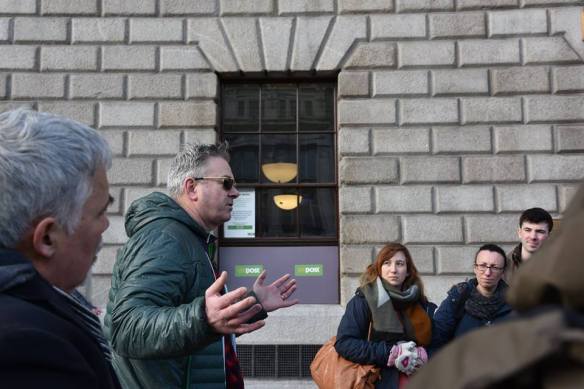
Archaeologist and Project Director, talking outside Dublin’s GPO.
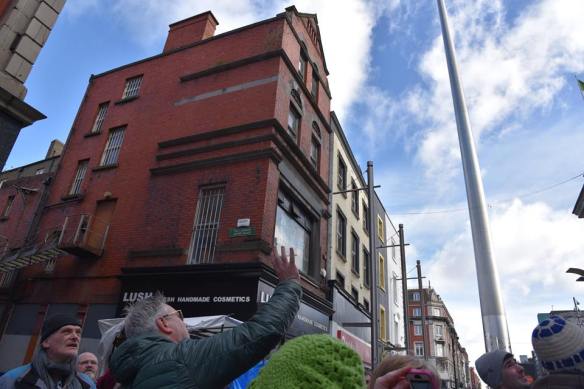
The Spire now stands where Nelson’s Pillar once towered in 1916. The plinth of the pillar would’ve been 2 and a half times wider than the spire – when imagining the urban landscape of 1916, it is just as important to note what has changed and disappeared in the last 100 years as what still survives.
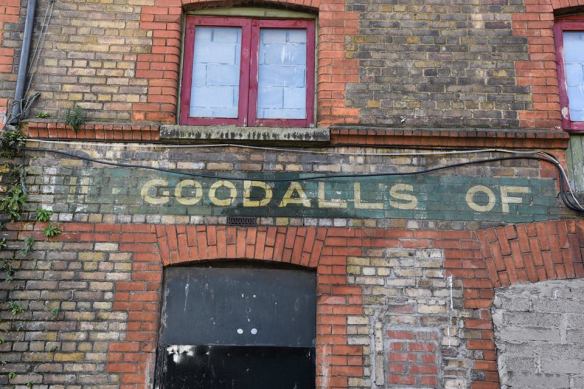
If you look closely at this painted sign on Moore Lane, behind Moore Street, you can see the letters “O’BRIENS” behind “Goodalls of…” this is really important as O’Brien’s Mineral Water Stables were mentioned in the witness statements taken from those who were associated with the retreat through Moore Street in 1916. It’s incredible that paint traces from over 100 years ago still survive today and contribute to such a significant event in Dublin’s history.
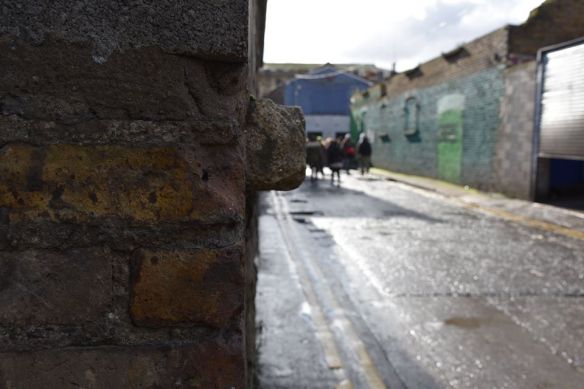
If you look closely at the right corner of the top corner brick of this wall on Moore Lane, you will see a chip and small bullet hole where a bullet ricocheted during the conflict in 1916, this physical evidence is the archaeology of 1916, which still surives in Dublin’s contemporary urban landscape – all you have to do is know where and what to look for…
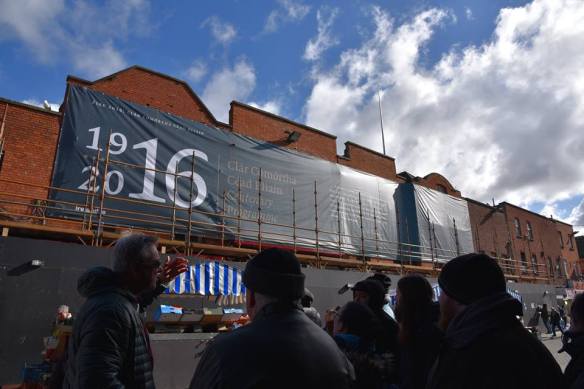
Nos 14-17 Moore Street which are a National Monument. This terrace of houses was used by the Irish Rebels who retreated from the GPO as an escape route to dodge the British Army who had already shot innocent civilians on this street. In order to pass through the buildings they burrowed large holes in the dividing walls, these holes since blocked up, are still evident today. At least 350 people passed through this route, including an injured James Connelly who was carried on a stretcher.
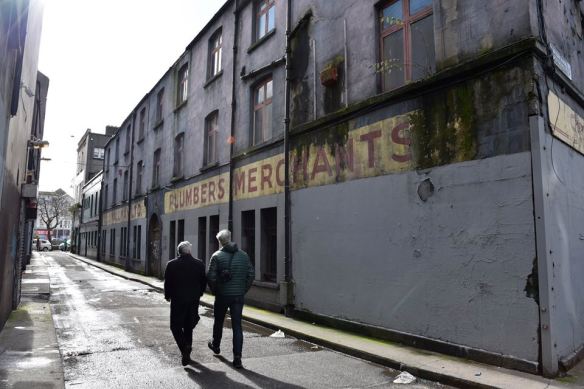
Project directors, Franc Myles and Prof. Aidan O’Sullivan, heading towards the Liffey, eyes freshly peeled after all that detective work…!
All images by Alva MacGowan.
